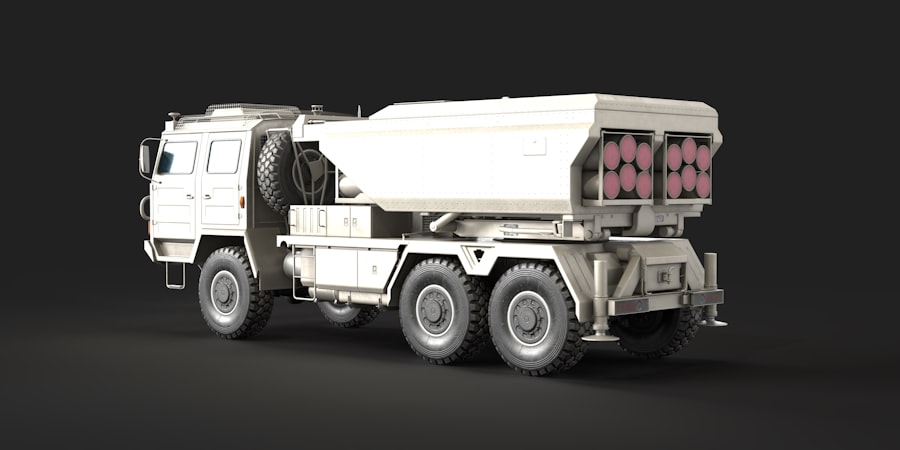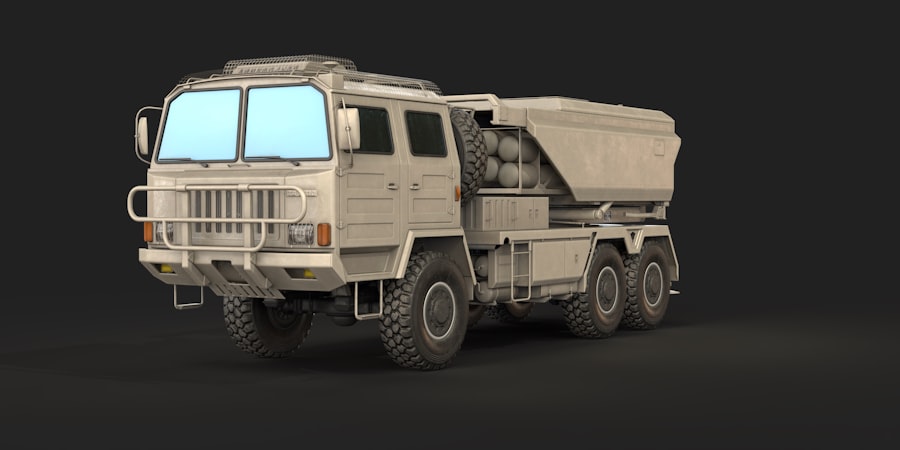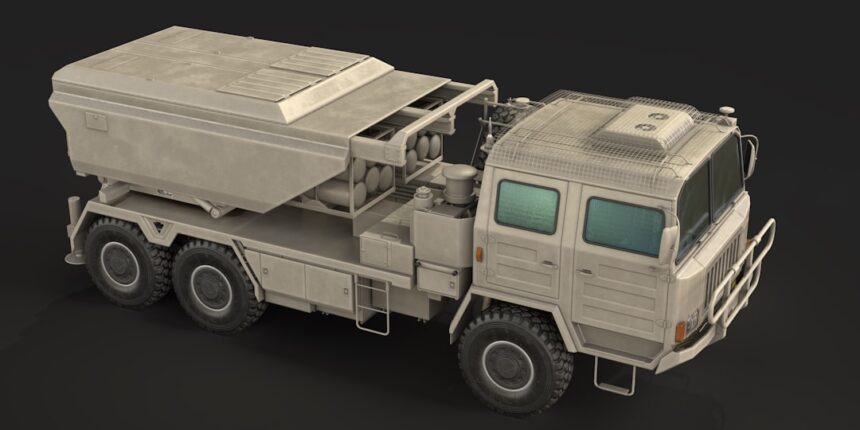Russia’s advanced missile defense technology has emerged as a pivotal element in the global security landscape. As nations grapple with the complexities of modern warfare and the proliferation of missile technology, Russia has positioned itself as a formidable player in the realm of defense systems. The country’s commitment to developing sophisticated missile defense capabilities reflects its strategic priorities and its response to perceived threats from both regional adversaries and global powers.
This article delves into the intricacies of Russia’s missile defense technology, tracing its historical roots, current capabilities, and implications for international relations. The significance of Russia’s missile defense systems extends beyond mere military prowess; they serve as a deterrent against potential aggressors and play a crucial role in shaping the geopolitical dynamics of the 21st century. As tensions rise in various parts of the world, understanding the evolution and current state of Russia’s missile defense technology becomes essential for comprehending the broader security environment.
Key Takeaways
- Russia has developed advanced missile defense technology to protect its territory and interests.
- The history and development of Russia’s missile defense systems have been shaped by geopolitical and military considerations.
- Russia’s current missile defense capabilities include advanced systems such as the S-400 and S-500.
- Russia’s missile defense technology plays a significant role in global security and has implications for geopolitical relations.
- The challenges and limitations of Russia’s missile defense systems highlight the need for future innovations and integration with other military technologies.
The History and Development of Russia’s Missile Defense Systems
The history of Russia’s missile defense systems can be traced back to the Cold War era when the Soviet Union recognized the need to counteract the growing threat posed by ballistic missiles. The initial efforts led to the development of the A-35 system, which was designed to protect Moscow from nuclear strikes. This early system laid the groundwork for subsequent advancements, as it highlighted the importance of intercepting incoming threats before they could reach their targets.
Over the decades, Russia has invested heavily in research and development, resulting in a series of increasingly sophisticated missile defense systems. As the geopolitical landscape shifted following the dissolution of the Soviet Union, Russia faced new challenges that necessitated a reevaluation of its defense strategies. The 1990s saw a decline in military funding, but by the early 2000s, under President Vladimir Putin’s leadership, there was a renewed focus on modernizing the military, including missile defense capabilities.
The development of systems such as the S-300 and later the S-400 showcased Russia’s commitment to creating advanced technologies that could effectively counter various aerial threats. These systems not only enhanced national security but also positioned Russia as a key player in global arms markets.
Overview of Russia’s Current Missile Defense Capabilities

Today, Russia boasts a comprehensive array of missile defense systems designed to address a wide spectrum of threats. The S-400 Triumf is one of the most notable systems in its arsenal, capable of engaging multiple targets at varying altitudes and distances. This system has garnered international attention due to its advanced radar capabilities and versatility in intercepting both ballistic and aerial threats.
Additionally, the S-500 Prometey is on the horizon, promising even greater capabilities with its ability to target hypersonic missiles and stealth aircraft. In addition to these ground-based systems, Russia has also developed naval missile defense technologies, such as the Fort system deployed on various warships. This multi-faceted approach ensures that Russia can protect its airspace and maritime interests from a range of potential threats.
Furthermore, advancements in command and control systems have enhanced situational awareness, allowing for quicker response times and more effective coordination among different branches of the military. Collectively, these capabilities underscore Russia’s commitment to maintaining a robust missile defense posture.
The Role of Russia’s Missile Defense Technology in Global Security
| Country | Missile Defense Technology | Impact on Global Security |
|---|---|---|
| Russia | S-400, S-500, A-135 | Enhances Russia’s defense capabilities and influences global strategic balance |
| United States | THAAD, Aegis, Ground-Based Midcourse Defense | Contributes to US defense strategy and influences global security dynamics |
| China | HQ-9, HQ-19, HQ-26 | Strengthens China’s defense posture and impacts regional security dynamics |
| European Union | European Phased Adaptive Approach (EPAA) | Contributes to European defense cooperation and NATO’s missile defense capabilities |
Russia’s missile defense technology plays a critical role in shaping global security dynamics. As nations invest in their own military capabilities, the presence of advanced missile defense systems can act as a stabilizing force or a source of tension, depending on how they are perceived by other countries. For instance, Russia’s deployment of missile defense systems near its borders has raised concerns among neighboring countries and NATO allies, prompting discussions about security guarantees and military alliances.
Moreover, Russia’s missile defense capabilities serve as a counterbalance to U.S. and NATO missile defense initiatives. The strategic competition between these powers has led to an arms race in missile technology, with each side seeking to outpace the other in terms of defensive and offensive capabilities.
This dynamic complicates diplomatic efforts aimed at arms control and disarmament, as nations grapple with the implications of advanced missile defense systems on their security strategies.
Comparison of Russia’s Missile Defense Systems with Other Countries
When comparing Russia’s missile defense systems with those of other countries, several key differences emerge. The United States, for example, has developed its own advanced systems such as the Aegis Ballistic Missile Defense and Terminal High Altitude Area Defense (THAAD). While these systems are highly effective in their own right, they differ from Russia’s approach in terms of integration and operational philosophy.
Russia emphasizes a layered defense strategy that combines various systems to create a comprehensive shield against multiple types of threats. Additionally, countries like China are also making significant strides in missile defense technology, leading to an increasingly competitive landscape. China’s advancements in hypersonic weapons and missile interception capabilities pose new challenges for both Russia and the United States.
As nations continue to innovate and develop their own systems, understanding these differences becomes crucial for assessing global security dynamics and potential flashpoints for conflict.
The Impact of Russia’s Missile Defense Technology on Geopolitical Relations

The development and deployment of Russia’s missile defense technology have profound implications for geopolitical relations. As countries perceive threats from one another, they often respond by bolstering their own military capabilities, leading to an escalation of tensions. For instance, NATO’s expansion eastward has been met with strong opposition from Russia, which views it as a direct threat to its national security.
In response, Russia has enhanced its missile defense systems along its western borders, further straining relations with neighboring countries. Moreover, Russia’s partnerships with countries like Iran and Syria highlight how missile defense technology can influence regional dynamics. By providing advanced systems to these nations, Russia not only strengthens its alliances but also positions itself as a counterweight to U.S.
influence in the Middle East. This strategic maneuvering underscores how missile defense technology can serve as both a tool for deterrence and a means of projecting power on the global stage.
Challenges and Limitations of Russia’s Missile Defense Systems
Despite its advancements, Russia’s missile defense systems face several challenges and limitations that could impact their effectiveness. One significant concern is the rapid evolution of offensive missile technologies, particularly hypersonic weapons that can evade traditional interception methods. As adversaries develop more sophisticated means of delivering strikes, Russia must continuously adapt its defenses to counter these emerging threats.
Additionally, budget constraints and economic factors can hinder ongoing research and development efforts. While Russia has made substantial investments in its military capabilities, fluctuations in oil prices and economic sanctions can impact funding for modernization programs. This reality raises questions about the long-term sustainability of its missile defense initiatives and whether they can keep pace with advancements made by other nations.
Future Prospects and Innovations in Russia’s Missile Defense Technology
Looking ahead, the future prospects for Russia’s missile defense technology appear promising yet challenging. Ongoing research into new materials and technologies may lead to breakthroughs that enhance interception capabilities against advanced threats. Innovations such as artificial intelligence and machine learning could play a pivotal role in improving situational awareness and decision-making processes within command centers.
Furthermore, collaboration with allied nations may yield new insights and technologies that bolster Russia’s defenses. As global security dynamics continue to evolve, partnerships with countries like China could lead to joint developments that enhance both nations’ capabilities against common threats. However, navigating these collaborations will require careful diplomacy to ensure that they do not exacerbate existing tensions with other powers.
The Integration of Russia’s Missile Defense Systems with Other Military Technologies
The integration of missile defense systems with other military technologies is crucial for maximizing their effectiveness on the battlefield. In recent years, Russia has made strides in creating a more interconnected military infrastructure that allows for seamless communication between various branches of its armed forces. This integration enhances situational awareness and enables quicker response times during potential conflicts.
For instance, linking missile defense systems with satellite surveillance capabilities can provide real-time data on incoming threats, allowing for more accurate targeting decisions. Additionally, incorporating cyber capabilities into missile defense operations can help protect against electronic warfare tactics employed by adversaries seeking to disrupt communication networks or disable defensive systems.
The Strategic Implications of Russia’s Advanced Missile Defense Technology
The strategic implications of Russia’s advanced missile defense technology extend far beyond its borders.
This arms race mentality can lead to increased tensions and instability in various regions around the world.
Moreover, Russia’s ability to project power through its missile defense systems can influence diplomatic negotiations on arms control agreements. As countries seek to establish frameworks for limiting nuclear arsenals or reducing tensions, the presence of advanced missile defenses complicates these discussions by introducing new variables into the equation.
The Importance of Russia’s Missile Defense Technology in the Modern World
In conclusion, Russia’s advanced missile defense technology represents a critical component of its national security strategy and has far-reaching implications for global security dynamics. As nations navigate an increasingly complex landscape marked by technological advancements and shifting alliances, understanding the role of missile defense systems becomes essential for comprehending contemporary geopolitical relations. The evolution of these systems reflects not only Russia’s commitment to safeguarding its sovereignty but also its desire to assert itself as a key player on the world stage.
As challenges persist and new threats emerge, ongoing investment in research and development will be vital for maintaining effective defenses against evolving adversaries. Ultimately, the importance of Russia’s missile defense technology cannot be overstated; it serves as both a deterrent against aggression and a catalyst for broader discussions about security cooperation among nations in an interconnected world.
In response to the ongoing developments in missile defense systems, Russia has been actively enhancing its own military capabilities. A related article that delves into this topic can be found at this link, where it discusses the implications of Russia’s advancements in missile technology and their strategic significance in the current geopolitical landscape.
WATCH THIS! The Secret Russian Weapon That Terrifies NATO
FAQs
What is Russia’s answer to missile defense?
Russia’s answer to missile defense is the development of advanced missile defense systems such as the S-400 and S-500 systems, as well as the development of hypersonic missiles.
What is the S-400 missile defense system?
The S-400 is a long-range surface-to-air missile defense system developed by Russia. It is designed to intercept and destroy a variety of targets, including aircraft, drones, and ballistic and cruise missiles.
What is the S-500 missile defense system?
The S-500 is an advanced missile defense system currently under development by Russia. It is designed to provide defense against a wide range of aerial threats, including ballistic and hypersonic missiles.
What are hypersonic missiles?
Hypersonic missiles are a type of missile that travel at speeds greater than Mach 5, or five times the speed of sound. They are highly maneuverable and can travel at low altitudes, making them difficult to detect and intercept.
Why is Russia developing advanced missile defense systems?
Russia is developing advanced missile defense systems in response to the deployment of missile defense systems by other countries, particularly the United States. Russia sees these systems as a threat to its national security and is working to develop its own capabilities to counter them.




